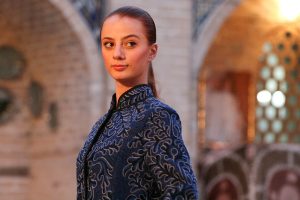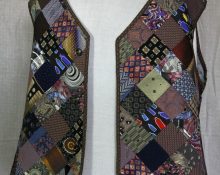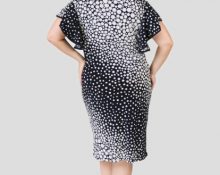
creativecommons.org
The history of national costume is always a fascinating excursion into history. Today, an authentic Uzbek costume with dresses, robe and trousers can be seen only during holidays in Uzbekistan. But lately, national motifs have been heard more and more often at fashion shows, which makes it possible to wear, for example, an Uzbek dress, not only to private events for one’s own people and to theatrical performances, but also to wear it as everyday wear. In this article we will analyze the history of the Uzbek national costume, how to wear it correctly and how you can adapt the Uzbek dress to modern realities. At the end of the material you will find ideas for wearing Uzbek dresses and examples of the best combinations with accessories.
History of the Uzbek national costume
Like the vast majority of national women's costumes of the peoples of Central Asian states, the Uzbek dress, on the one hand, attracted attention with its brightness, and on the other hand, it maximally hid the body of the hostess from prying eyes. Initially, the traditional Uzbek women's costume consisted of a dress, a robe, trousers, a cape covering the head, and an embroidered skullcap. To emphasize their social status, women wore gold and silver jewelry, and sometimes even decorated their clothes with precious metals.
The main distinctive part of the outfit was the robe, which helped determine exactly where its owner was from. Thus, residents of the Bukhara and Samarkand oases wore mostly lightweight outerwear called rumcha. Most often, such robes were fitted and were cut with wider and shorter sleeves. Another type of robe was the so-called mursak, which was considered a mandatory attribute for important events. Today, the mursak has practically gone out of use; it is worn mainly at funerals on very rare occasions (this custom was officially abolished in the 1920s). Another variety of outerwear was a camisole and nimcha (an elongated sleeveless vest, reminiscent of a vest).
As their main clothing, women from Uzbekistan wore a lighter version of the national costume: a dress (kuylak) and trousers (lozima). Naturally, at home, women wore only a dress, and trousers were worn only on cold days. The Uzbek dress most often had a straight cut, and the hem ended at the ankles. But sometimes fashionistas sewed models with wider waists towards the bottom.Uzbek dresses of unmarried women most often had a horizontal collar, decorated with gold braid or embroidery, and the collar was tied with special ribbons at the shoulders (later they were replaced with buttons). Unlike robes, the sleeves on Uzbek dresses were long and narrow in order to cover the maximum area of the body, including the hands, from prying eyes. Unlike unmarried compatriots, married Uzbek women could afford to wear dresses with a vertical collar, the cut depth of which sometimes reached 25 cm. The edges of such a vertical collar were also tied with braid and additionally secured with a brooch.
In the cold season, sometimes two dresses were worn at once, and on holidays it was quite acceptable for noble women to wear several Uzbek dresses at once. Naturally, all this multi-layered clothing (and the number of layers) had to be demonstrated to others: so all the dresses worn had slightly different sleeve lengths, colors and patterns, so that all the layers of rich embroidery on each of the outfits could be seen. The most desperate fashionistas took extra dresses with them when visiting so that the hosts could see all the best outfits in their wardrobe. A separate addition to the Uzbek dress (if it was not very long) were bloomers, which were usually sewn from two types of fabrics: the upper part was made of ordinary practical material, and the lower part peeking out from under the dress was made of expensive linen, decorated with braid and tassels .
It was in this form that the Uzbek dress, practically without any fundamental changes, reached the twentieth century.Minor changes in the cut began to appear only at the end of the 19th century, when a cut-off yoke appeared on the Uzbek women's dress, a small stand-up collar appeared in the neck area, and cuffs began to be made on the sleeves.
At the beginning of the twentieth century, with the development of dyes for fabric and tailoring of Uzbek dresses, brighter colors began to be used, which looked very impressive on satin fabric or silk. This was especially noticeable in the 1930s, when most of the region could afford to attract attention and received more freedoms. By the 1940s, the image became less bright and even acquired some features of masculinity; beauty gave way to practicality. Since the 1950s and 60s, the image of women in Uzbekistan has become increasingly Europeanized: the famous braids give way to discreet buns and ponytails, and instead of traditional shoes and an Uzbek robe, they began to wear boots and sheepskin coats. But no new trends could force Uzbek women to abandon their favorite fabrics, satin and silk. Even as practicality and restraint began to be favored in the 1970s, a significant percentage of Uzbek women continued to wear traditional Uzbek dresses. The turning point occurred in the 1980s and 90s, when jeans and sneakers appeared on the market.
Uzbek wedding dress

creativecommons.org
We should also talk about the Uzbek wedding dress, which is still preferred by many modern Uzbek women, especially if the future spouse is of the same nationality. The bride's dress and lozima are made from the legendary khan silk, which is sometimes also called “wild silk”.The threads of this silk are dyed even before the fabric itself is made, thanks to which, already on the finished piece, the national pattern appears on an absolutely smooth fabric with bright flashes. A richly embroidered sleeveless vest and a silk robe are thrown over the dress. Sometimes the robe is replaced with a more modern camisole. A filigree kokoshnik is placed on the bride’s head, from which a thin veil falls over the bride’s face. The entire outfit is complemented by numerous gold jewelry (the more, the better); it is believed that jewelry protects the future spouse from evil spirits.
Trends in modern fashion for Uzbek dresses
It is worth noting that Uzbek dresses, even in the 21st century, despite globalization and blurring of borders, have not lost their oriental flavor. They still look more like loose tunics and hide most of the model's figure. As at the beginning of the twentieth century, the favorite fabrics are khan-satin, velvet and silk. In the last decade, the trend towards national patterns and originality of images has been strengthening. New versions of rethought Uzbek dresses are appearing on the catwalks, which have retained the authentic shape, but acquired a more delicate color scheme and were enriched with new ornaments..


 0
0





